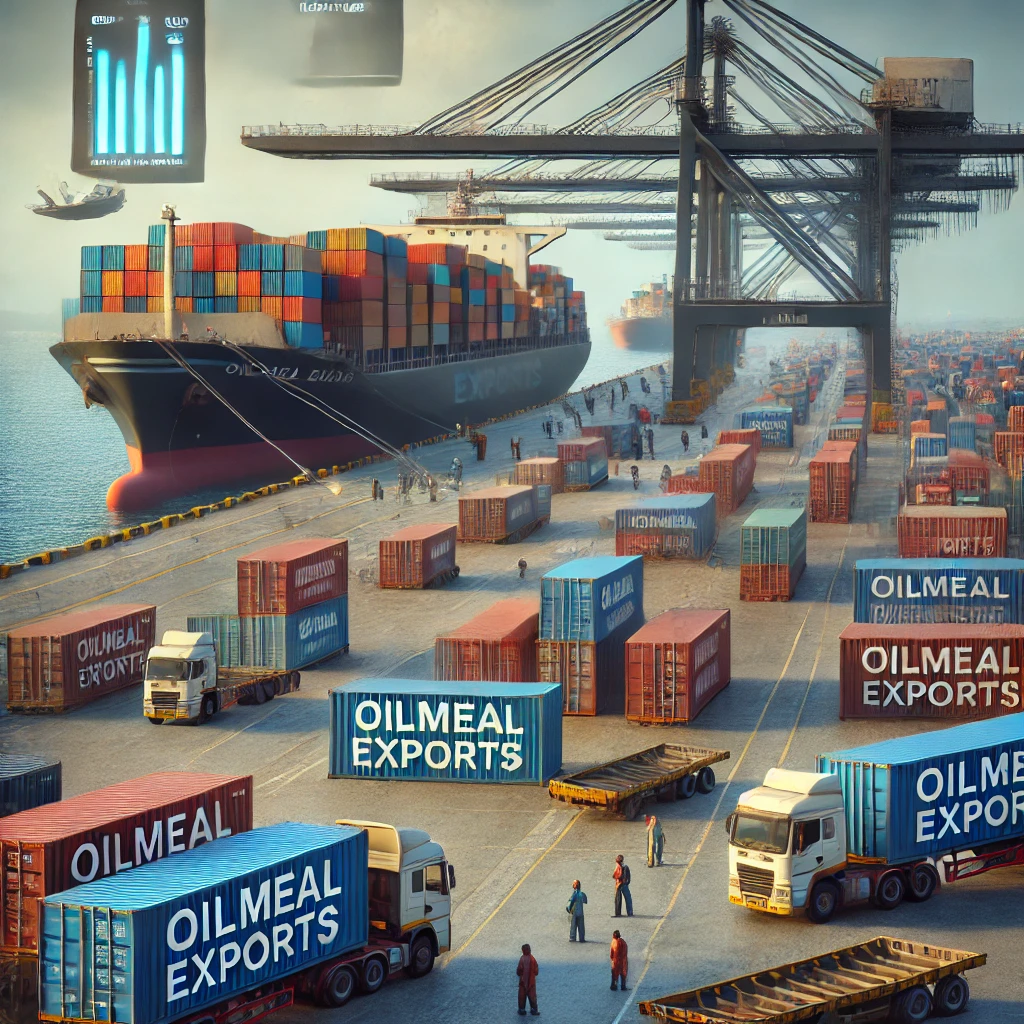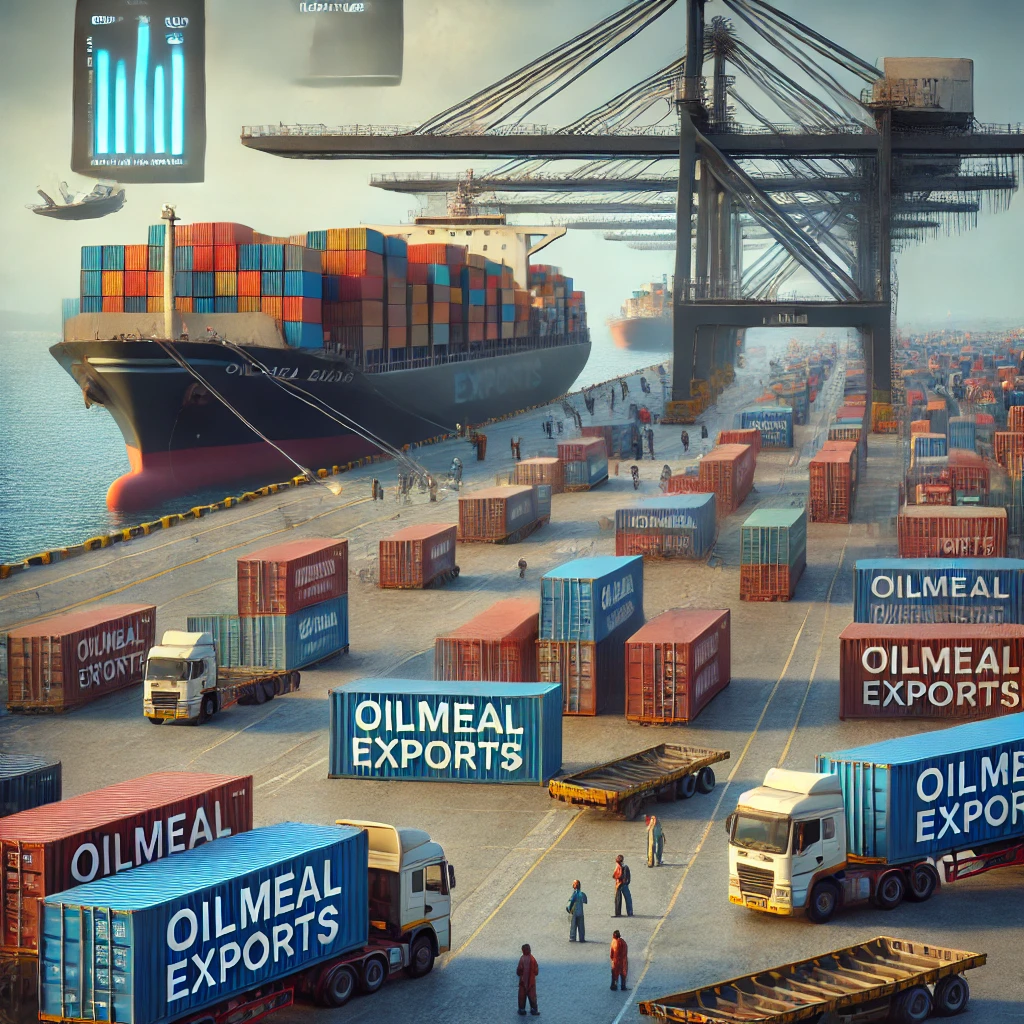
India's oilmeal exports witnessed a 12% decline in the April-February period of the fiscal year 2024-25, totaling 3.46 million metric tons (MMT) compared to 3.93 MMT during the same period in the previous year, according to the Solvent Extractors’ Association of India (SEA). The decline in exports is primarily attributed to reduced demand from key international markets and price fluctuations in the global oilseed and meal markets. Key Export Data and Trends
- Soybean Meal Exports:
Exports of soybean meal fell by 15% to 1.25 MMT in the first 11 months of FY 2024-25, compared to 1.47 MMT during the same period in FY 2023-24. Lower crushing activity and decreased demand from countries such as Bangladesh, Vietnam, and Japan contributed to the decline. - Rapeseed Meal Exports:
Rapeseed meal exports also dipped by 9%, totaling 1.92 MMT compared to 2.11 MMT in the previous year. The drop was mainly due to increased domestic consumption and stiff competition from other oilmeal-producing countries, particularly China. - Rice Bran Meal Exports:
Rice bran meal exports showed a marginal decline of 5%, reaching 240,000 tons, with lower demand from traditional buyers in Southeast Asia. - Castor Meal Exports:
Castor meal exports declined by 8% to 50,000 tons, as global demand for this niche product remained subdued.
Major Export Destinations and Performance
- South Korea: Continued to be India’s largest oilmeal export destination, but shipments fell by 10% due to reduced demand and price sensitivity.
- Vietnam: Faced a sharp reduction of 18% in oilmeal imports from India due to increased domestic production and alternate sourcing.
- Bangladesh and Thailand: Both countries imported lower quantities due to local availability of feedstock and changes in dietary patterns in the poultry sector.
- Japan: Showed a marginal increase in imports of soybean meal, but the overall volume remained low compared to previous years.
Factors Contributing to the Decline
- High Domestic Prices:
Indian oilmeal prices remained elevated due to strong domestic demand and lower production of soybeans and rapeseed, making exports less competitive in global markets. - Competition from Global Producers:
Countries like Argentina and Brazil, with lower production costs, posed stiff competition for India in global markets, impacting its market share. - Reduced Crushing Activity:
Lower availability of raw oilseeds led to a decline in crushing activity, thereby reducing the production of oilmeals available for export. - Weak Global Demand:
Global demand for oilmeals has slowed due to reduced poultry feed requirements in some major importing countries, affecting India’s export prospects.
Government and Industry Response To address the situation, the Indian government and SEA have recommended:
- Exploring new export markets to diversify India's buyer base.
- Providing export incentives and enhancing competitiveness to mitigate the effects of price volatility.
- Promoting value-added products to generate higher returns and stabilize export volumes.
Despite the decline, SEA remains optimistic about a potential recovery in exports for FY 2025-26, supported by higher oilseed production, improved international market conditions, and new trade agreements with emerging markets. However, challenges such as climate variability, fluctuating input costs, and global trade policies may continue to influence India’s oilmeal export performance.



